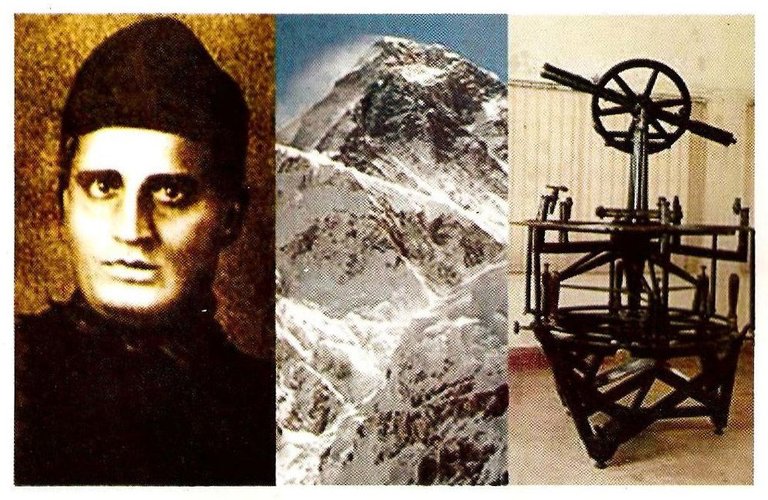
Radhanath Sikdar (1813 – 17 May 1870) was an Indian mathematician par excellence who, among many other things, helped calculate the height of peak XV (later named Mount Everest) in the Himalaya and established it to be the highest mountain above sea level and was an integral part of the Great Trigonometrical Survey of India.
Included below are pages from a monograph on Radhanath Sikdar by Dr S K Nath published in the form of a booklet commemorating Radhanath's bicentennial anniversary which reveals his extraordinary mathematical acumen as well as his rebel nature and stand equal rights under the British colonial rule.

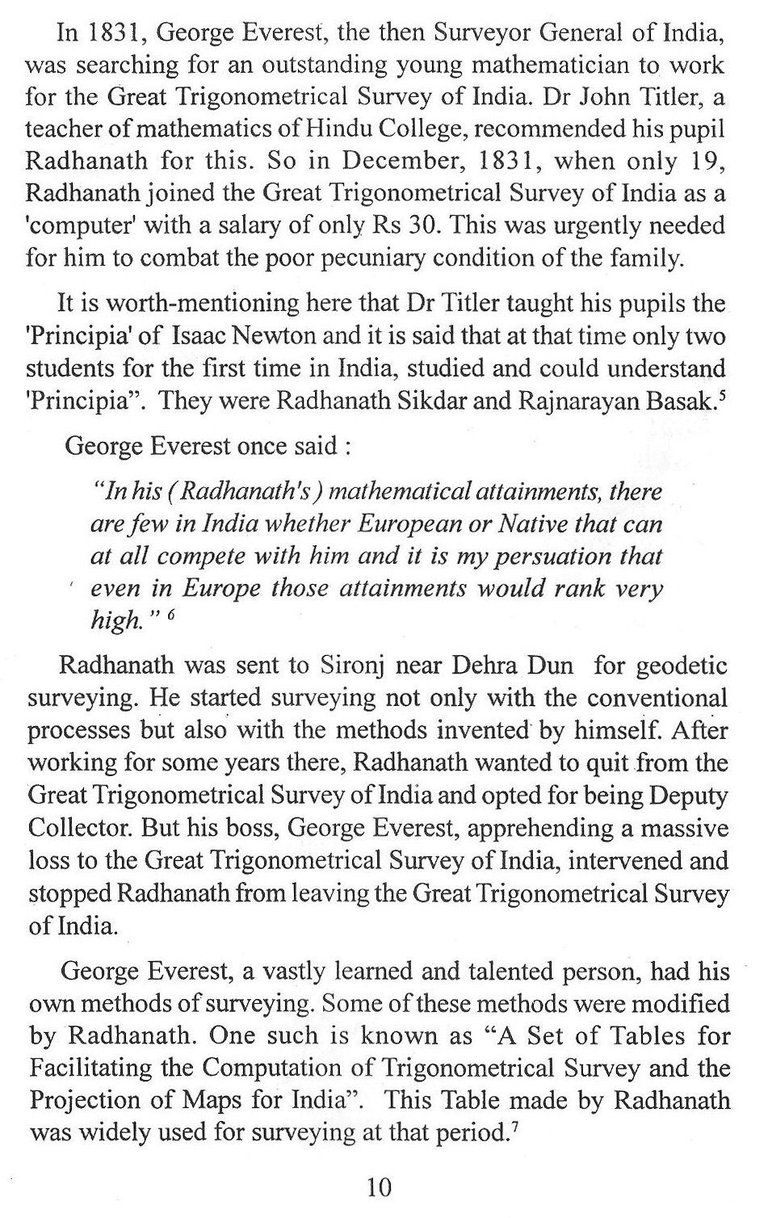
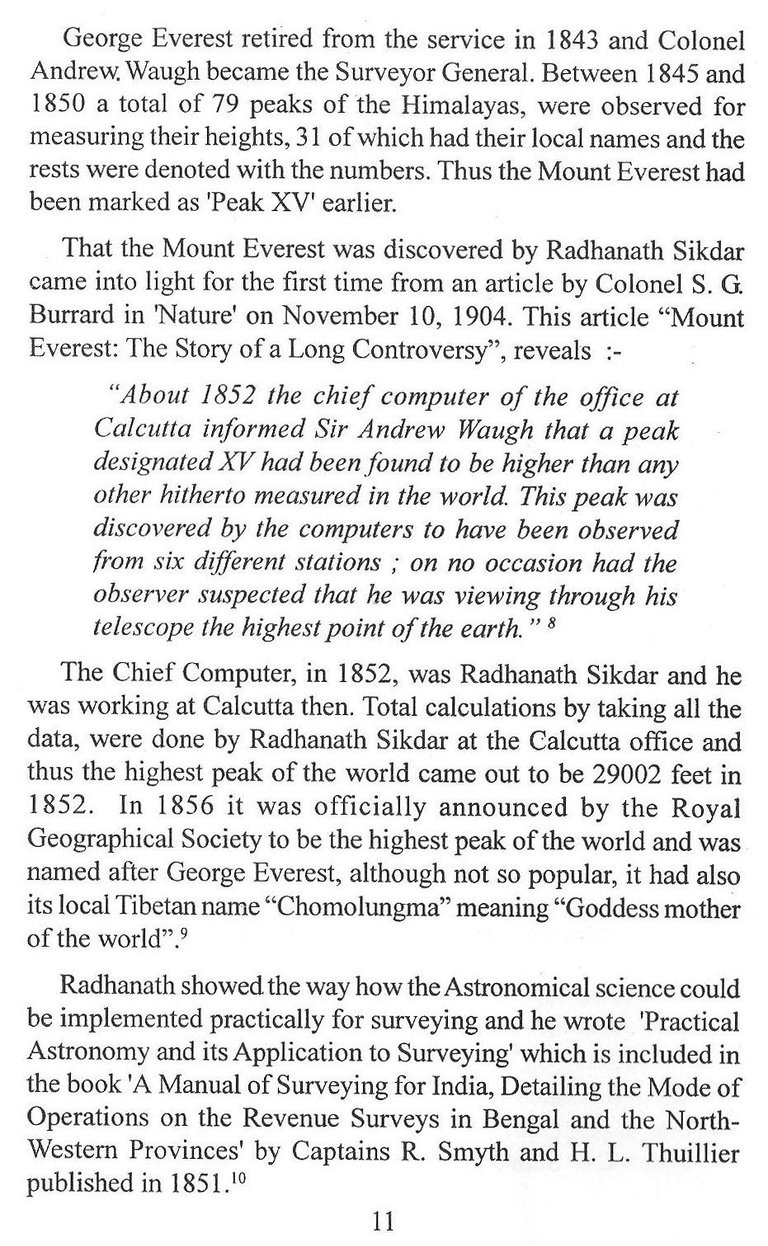
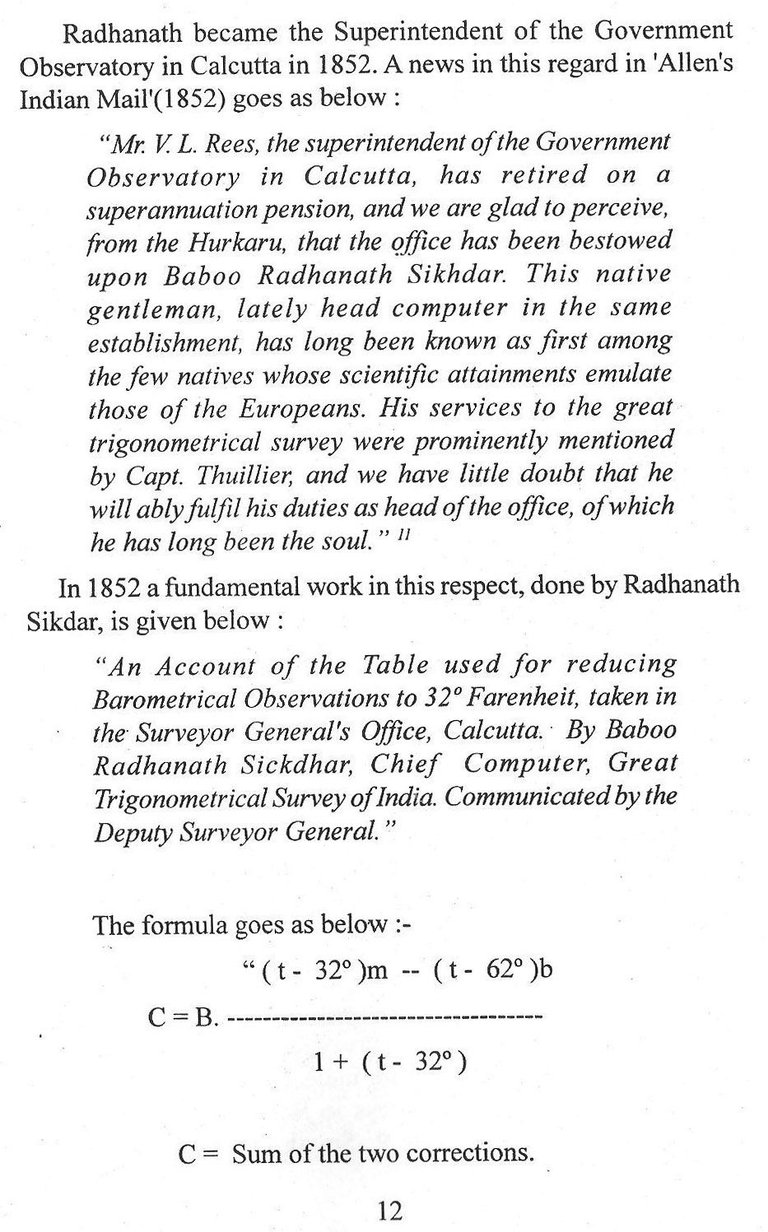
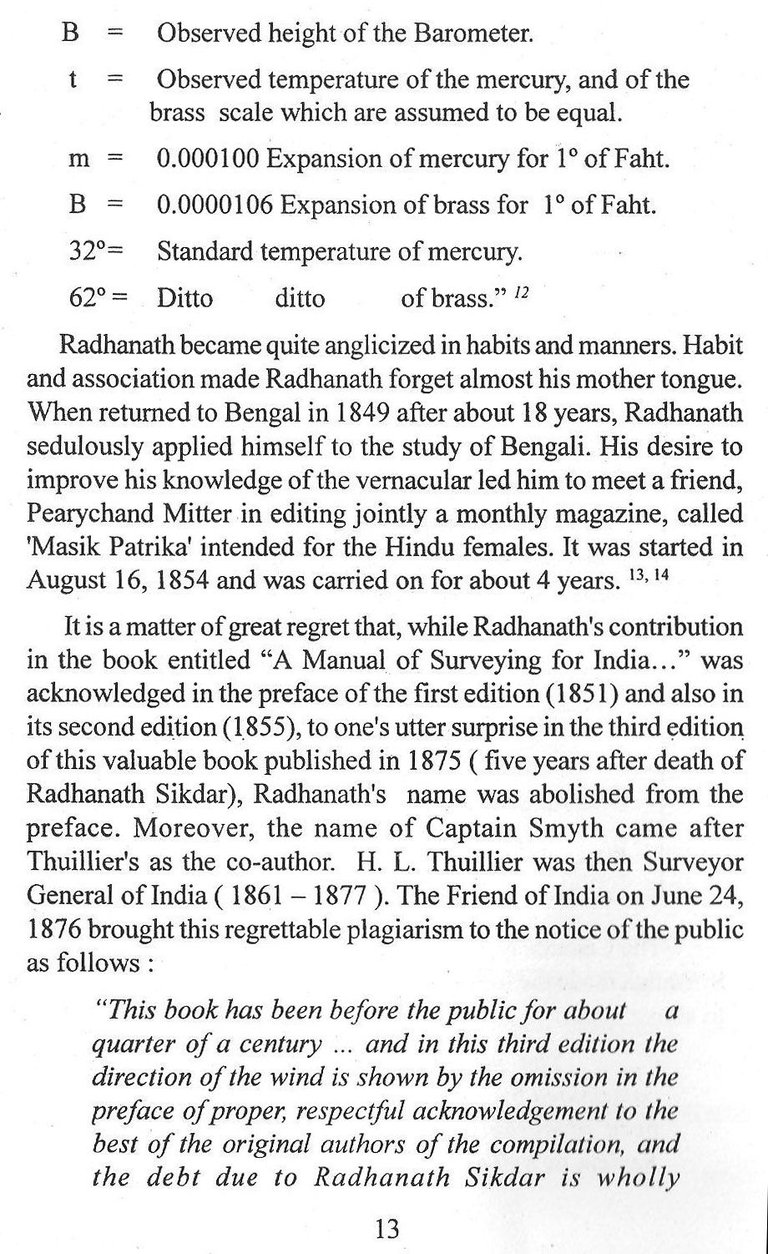
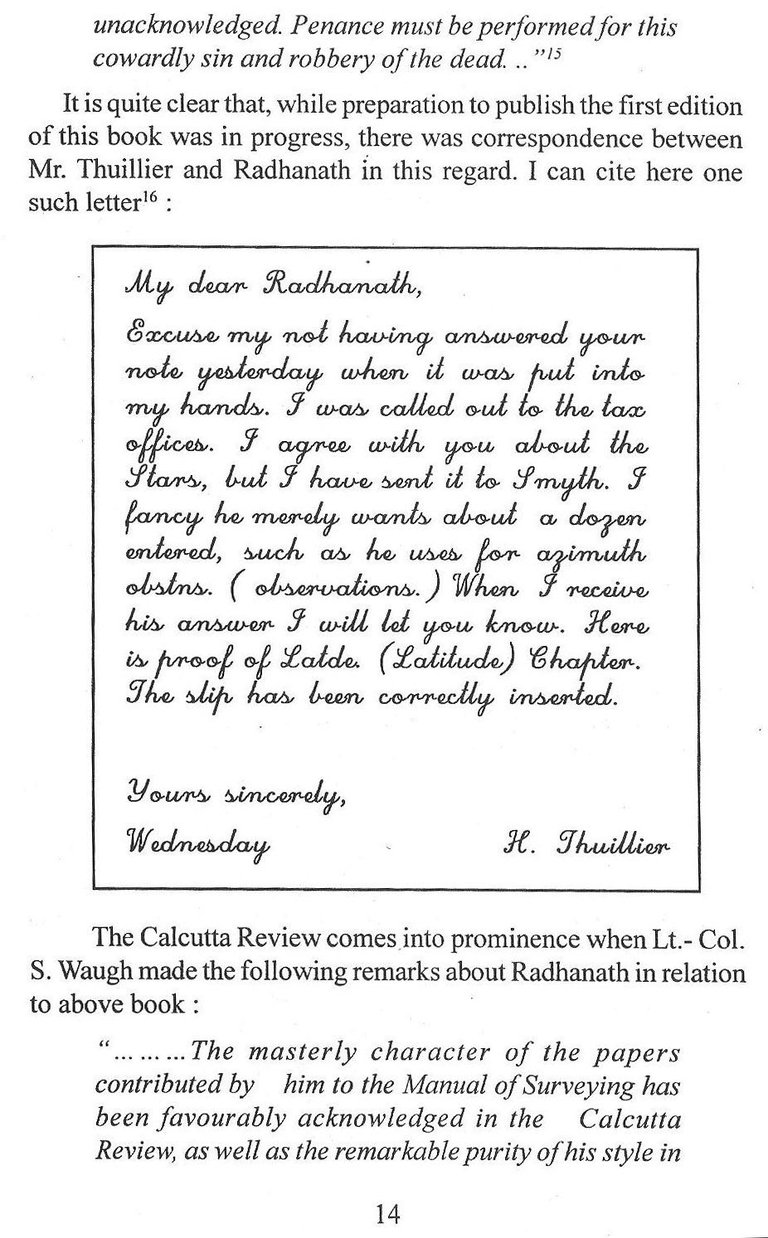
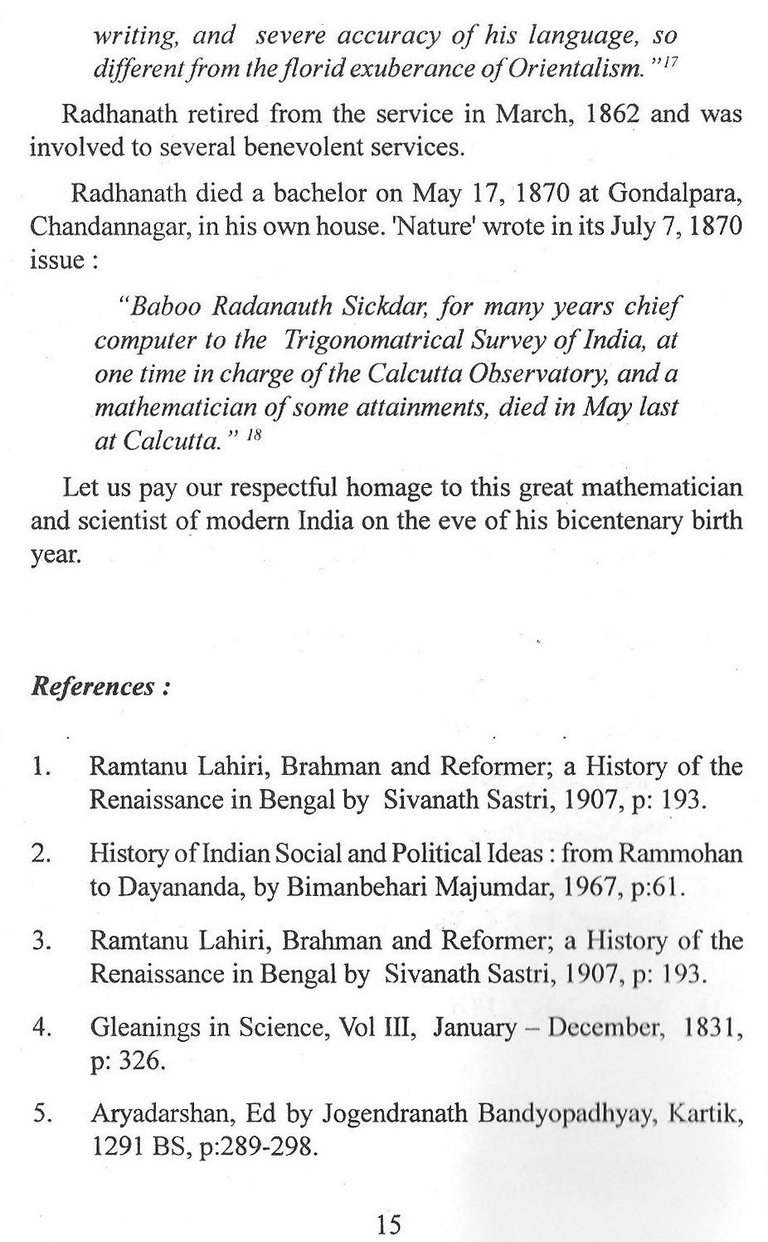
Great Trigonometric Survey & naming of Everest
[Info Wiki]
When in 1831 Surveyor General of India George Everest was searching for a brilliant young mathematician with particular proficiency in spherical trigonometry, the Hindu College maths teacher Tytler superlatively recommended his pupil Radhanath, then only 19. Radhanath joined the Great Trigonometric Survey in 1831 December as a "computer" at a salary of thirty rupees per month. Soon he was sent to Sironj near Dehradun where he excelled in geodetic surveying. Apart from mastering the usual geodetic processes, he invented quite a few of his own. Everest was extremely impressed by his performance, so much so that when Sikdar wanted to leave GTS and be a Deputy Collector, Everest intervened, proclaiming that no government officer can change over to another department without the approval of his boss. Everest retired in 1843 and Col. Andrew Scott Waugh became the Director.
After 20 years in the north, Sikdar was transferred to Calcutta in 1851 as the Chief Computer. Here apart from his duties of the GTS, he also served as the Superintendent of the Meteorological department. Here he introduced quite a few innovations that were to remain as standard procedures for many decades to come. The most notable was the formula for conversion of barometric readings taken at different temperatures to 32 degrees Fahrenheit.
At the order of Colonel Waugh he started measuring the snow-capped mountains near Darjeeling. Compiling data about Peak XV from six different observations, he eventually came to the conclusion the Peak XV was the tallest in the world. He gave a full report to Waugh who was cautious enough not to announce this discovery before checking with other data. When after some years, he was convinced, only then did he publicly announce the same. The norm, strictly followed by Everest himself, was that while naming a peak, the local name should be preferred. But in this case, Waugh made an exception and paid a tribute to his predecessor.
Hi! I am a robot. I just upvoted you! I found similar content that readers might be interested in:
https://www.quora.com/Who-is-Mt-Everest-named-after